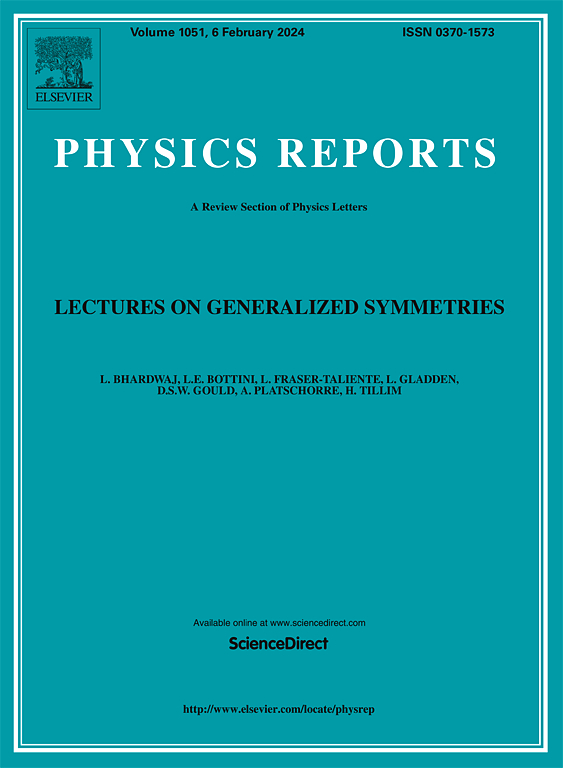网络反应扩散系统中疾病空间传播的最优控制
IF 29.5
1区 物理与天体物理
Q1 PHYSICS, MULTIDISCIPLINARY
引用次数: 0
摘要
长期以来,传染病一直被公众和卫生当局视为严重的公共卫生威胁,这强调了制定高效预防和控制战略的关键必要性。在统计物理和复杂系统领域,最优控制理论成为制定这些预防措施的基本和不可或缺的框架。同时,网络反应扩散系统已成为全面了解传染病传播复杂动力学的重要工具。这些系统整合了人类空间行为的多种基本方面,包括栖息地分布、小世界网络特性和大规模运动模式,这些都是深入研究复杂系统的关键要素。因此,人们对探索与这些反应扩散方程相关的最优控制问题迅速产生了兴趣。然而,对网络传染病模型的复杂动力学和最优控制的研究仍然有限,特别是在引入额外复杂性层的高阶网络的背景下。本文综述了网络反应扩散系统动力学和最优控制的最新进展,强调了它们在疾病预防和控制中的重要和不可替代的作用。我们深入研究了规则和复杂网络中的动力学,研究了网络结构和扩散参数如何影响疾病传播。此外,我们全面阐述了几种最优控制策略,包括稀疏和局部最优控制,并提出了一种集成反应和扩散项的综合方法。最后,展望了未来的研究方向,强调了有效应对疾病空间传播的综合策略的巨大潜力,从而为统计物理和复杂系统领域的相关领域提供了坚实的理论基础和实践指导。本文章由计算机程序翻译,如有差异,请以英文原文为准。
Optimal control of spatial diseases spreading in networked reaction–diffusion systems
Infectious diseases have long been acknowledged as significant public health menaces by both the general public and health authorities, emphatically underscoring the crucial necessity for highly efficacious prevention and control strategies. Within the realm of statistical physics and complex systems, optimal control theory emerges as a fundamental and indispensable framework for formulating these preventive measures. Simultaneously, networked reaction–diffusion systems have emerged as essential tools for comprehensively understanding the complex dynamics of infectious disease transmission. These systems integrate diverse and essential aspects of human spatial behavior, including habitat distribution, small-world network properties, and large-scale movement patterns, key elements in the in-depth study of complex systems. Consequently, there is a rapidly burgeoning interest in exploring the optimal control problems associated with these reaction–diffusion equations. However, study on the complex dynamics and optimal control of network infectious disease models remains limited, especially in the context of higher-order networks that introduce additional layers of complexity. This article reviews recent advances in the dynamics and optimal control of networked reaction–diffusion systems, underscoring their vital and irreplaceable role in disease prevention and control. We deep dive into the dynamics within both regular and complex networks, investigating how network structure and diffusion parameters influence disease transmission. Furthermore, we comprehensively expound upon several optimal control strategies, including sparse and local optimal control, and propose a comprehensive approach that integrates both reaction and diffusion terms. Finally, we outline future research directions, emphasizing the great potential of integrated strategies to effectively tackle spatial disease transmission, thereby providing a solid theoretical foundation and practical guidance for related fields within the expansive domain of statistical physics and complex systems.
求助全文
通过发布文献求助,成功后即可免费获取论文全文。
去求助
来源期刊

Physics Reports
物理-物理:综合
CiteScore
56.10
自引率
0.70%
发文量
102
审稿时长
9.1 weeks
期刊介绍:
Physics Reports keeps the active physicist up-to-date on developments in a wide range of topics by publishing timely reviews which are more extensive than just literature surveys but normally less than a full monograph. Each report deals with one specific subject and is generally published in a separate volume. These reviews are specialist in nature but contain enough introductory material to make the main points intelligible to a non-specialist. The reader will not only be able to distinguish important developments and trends in physics but will also find a sufficient number of references to the original literature.
 求助内容:
求助内容: 应助结果提醒方式:
应助结果提醒方式:


